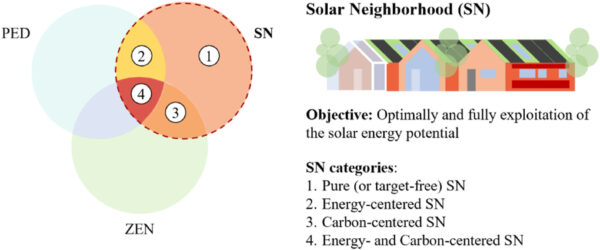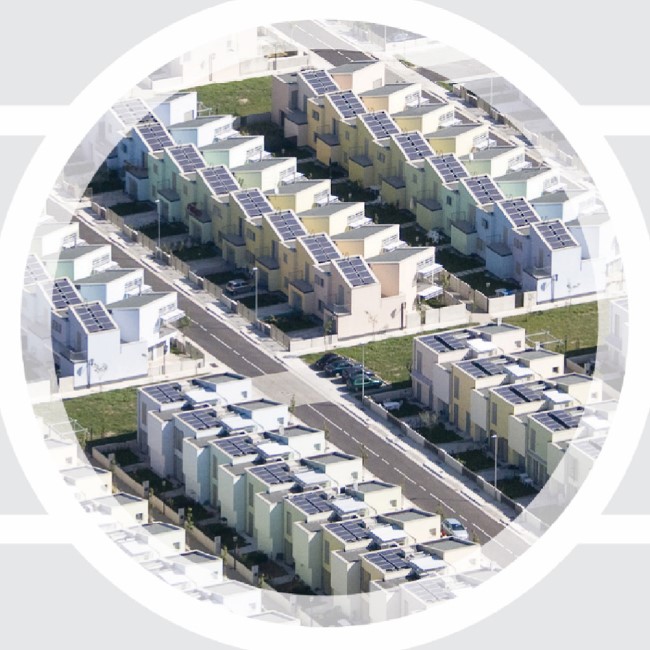An international group of scientists have devised strategies to develop and build what they call “solar neighborhoods.”
In a recently published academic paper, the researchers defined these neighborhoods as virtual entities that use stored datasets of monitored solar and energy variables. This includes solar energy production, solar energy gains, solar energy potential, level of illuminance and sunlight exposure with specific decision-making tools. “A solar neighborhood is primarily a neighborhood, hence an urbanized area either with a single function or with a mix of human activities and, in which the full and optimal exploitation of the sun is prioritized,” the paper said.
“The article aims to identify the existing barriers and challenges in solar energy planning and to present the most common strategies, methods, and approaches for solar neighborhood planning and design through the insights from developers, architects, consultants, researchers, urban planners, municipalities, and other institutions,” the researchers said.
The future development of such neighborhoods is dependent on enhanced research on several topics, the paper adds. Topics include the ability to create more reliable and detailed digital twins of buildings and cities, as well as digital simulations that allow for better assessments of neighborhoods before breaking ground.
“Many aspects are expected to be facilitated in the years to come by a broader digitalization of the building environment, supported by an extensive application of the Internet of Things (IoT), co-simulation approaches, advanced computer, and orchestration of real monitored data,” the paper said. “The combination of high level of detail (LoD) models of urban surfaces and high-resolution data can pave the way for digital twin platforms to conduct real-time solar analysis with multiple goals.”
To combat this, scientists have heightened the need to implement high LoD models for vegetation elements, urban furniture and architectural features of buildings and neighborhoods. They also highlighted the need to implement the dynamic behavior of the environment – such as snow reflection – into the simulations.
The researchers called for developing simulations for emerging surface treatments and technologies. This includes electrochromic windows, retroreflective coatings and thermochromic substrates. “They have implications within the complex urban phenomena such as overshadowing effects and solar inter-building reflections,” the paper said.

Image: Norwegian University of Science and Technology,
Building and Environment, CC BY 4.0 DEED
The research group has also stressed in the paper the need for better aesthetic solutions to support the social acceptance of solar neighborhoods. They also recommend the development of business models for solar neighborhoods to ensure their long-term viability and the promotion of legal reforms to support these processes.
A legislative agenda supporting solar neighborhoods, they claim in the research, needs to include incentives and subsidies for the adoption of solar technologies, especially passive ones. It should also include regulations that will streamline the development and standardization of measurement and certificates. In addition, the research group highlighted the need for guidelines for architectural design that balances aesthetics with solar technology deployment and collaboration between local governments, businesses and communities.
The planning strategies were presented in the study “Ten questions concerning planning and design strategies for solar neighborhoods,” published in Building and Environment. As its headline suggests, it deals with 10 different aspects of solar neighborhood development.
The research team comprises scientists from the Norwegian University of Science and Technology, the University of Savoy Mont Blanc, Italy’s Institute for Renewable Energy, the University of Applied Sciences and Arts Western Switzerland, Concordia University, Lund University and the Australian PV Institute.
This content is protected by copyright and may not be reused. If you want to cooperate with us and would like to reuse some of our content, please contact: editors@pv-magazine.com.








By submitting this form you agree to pv magazine using your data for the purposes of publishing your comment.
Your personal data will only be disclosed or otherwise transmitted to third parties for the purposes of spam filtering or if this is necessary for technical maintenance of the website. Any other transfer to third parties will not take place unless this is justified on the basis of applicable data protection regulations or if pv magazine is legally obliged to do so.
You may revoke this consent at any time with effect for the future, in which case your personal data will be deleted immediately. Otherwise, your data will be deleted if pv magazine has processed your request or the purpose of data storage is fulfilled.
Further information on data privacy can be found in our Data Protection Policy.